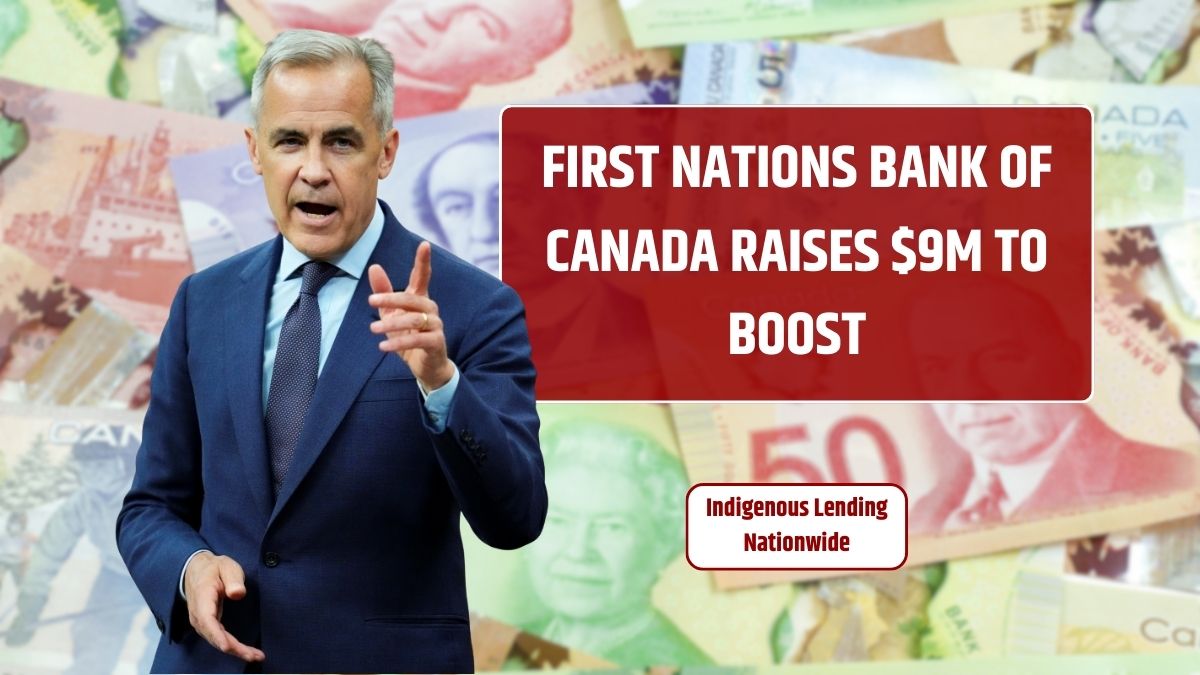The First Nations Bank of Canada (FNBC) just received a major financial boost—and it’s coming from within the Indigenous community. In August 2025, FNBC announced it had raised $9 million from five Indigenous-led groups and communities across Canada. This new capital will help the bank expand lending and support economic growth in First Nations, Inuit, and Métis communities.
This isn’t just about dollars—it’s about empowerment. Let’s break down how this money will be used and why it matters more than ever.
Table of Contents
Background
Founded in 1996, the First Nations Bank of Canada is not your typical bank. It’s 88% Indigenous-owned and focuses entirely on serving the unique financial needs of Indigenous peoples across the country.
FNBC provides:
- Personal and business loans
- Mortgages
- Trust services (through FNB Trust)
- Investment and community-focused banking
With branches across Canada and partnerships with major lenders like the Canada Mortgage and Housing Corporation, FNBC has become a trusted name in Indigenous finance.
Investors
This new $9 million raise didn’t come from big banks or hedge funds—it came from Indigenous communities and institutions that believe in the power of reinvesting in their people.
| Investor Name | Location / Treaty | Type |
|---|---|---|
| Whitefish Lake First Nation #128 | Treaty 8 – Alberta | Community |
| Úújǫ Developments | Treaty 8 – BC | Development Firm |
| Doig River First Nation | Treaty 8 – BC | Community |
| Dáanaa Jíli (Cache) Trust | Yukon | Shareholder |
| Athabasca Basin Development | Saskatchewan | Investment Firm |
These aren’t just passive shareholders. Many are already linked to FNBC, and all are committed to building an Indigenous-led financial future.
Purpose
Why is this funding so important?
According to FNBC CEO Bill Lomax, this is about more than money. It’s about putting Indigenous capital into Indigenous hands and using it to build long-term economic power.
This funding helps FNBC:
- Increase lending to Indigenous businesses and governments
- Expand key programs with national partners like BDC and CIB
- Keep pace with growing demand for commercial and infrastructure loans
Allocation
FNBC already has specific programs ready to use this new capital effectively.
| Program Name | Partner | Goal |
|---|---|---|
| CIB Indigenous Land Development Loan | Canada Infrastructure Bank | Fund land purchases and infrastructure |
| FNBC-BDC Indigenous Business Acquisition Loan | Business Development Bank of Canada | Help Indigenous people buy existing businesses |
This capital is going straight into programs that put ownership and land back into Indigenous hands.
FNBC also plans to raise up to $50 million by the end of 2026, showing just how ambitious its vision really is.
Growth
Since Bill Lomax took over leadership in 2023, FNBC has seen significant momentum.
- In 2024, they signed a $100 million loan agreement with CIB.
- In 2025, they launched a $100 million acquisition loan program with BDC.
These deals help First Nations and Métis entrepreneurs build businesses and infrastructure that benefit entire communities. The $9 million raise helps FNBC serve even more Indigenous borrowers.
Impact
This investment is about much more than building a bigger bank. It’s about building something Indigenous communities can truly call their own.
Here’s what Indigenous-led banking makes possible:
| Benefit | Description |
|---|---|
| Economic Self-Reliance | Communities control their own financial future |
| Local Decision-Making | Lending decisions made with local values in mind |
| Job Creation | Business ownership supports employment and skills |
| Wealth Building | Keeps capital flowing within Indigenous networks |
It’s a model based on trust, connection, and shared growth—something that traditional banks haven’t always offered to Indigenous customers.
The $9 million invested into FNBC shows just how far Indigenous finance has come—and how far it’s ready to go. With community-driven funding, national lending partnerships, and bold leadership, FNBC is building not just a bank, but a movement.
Indigenous-led finance is growing stronger, and this investment proves that communities investing in themselves can create lasting change.

